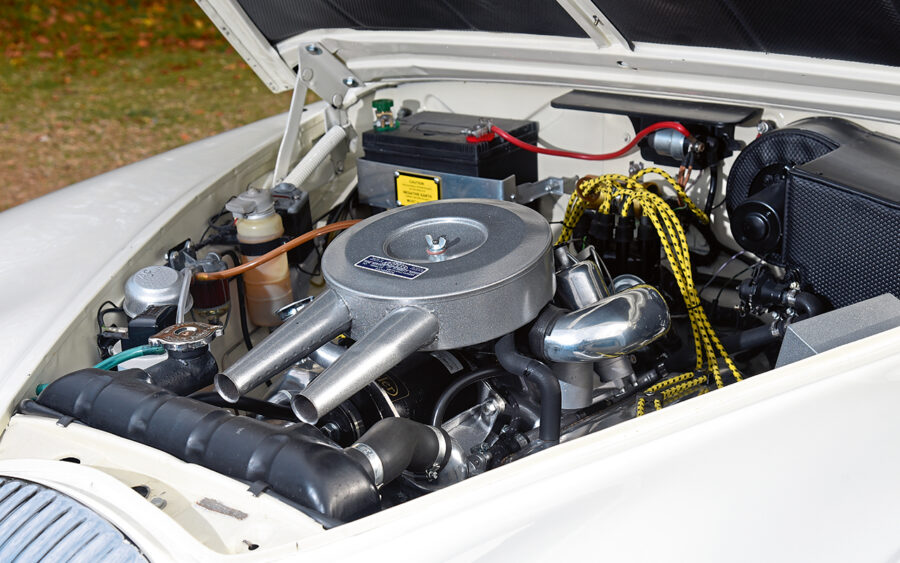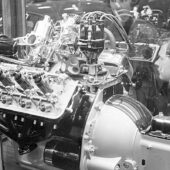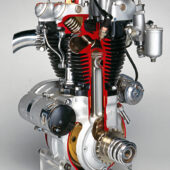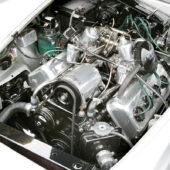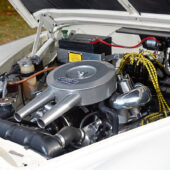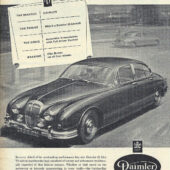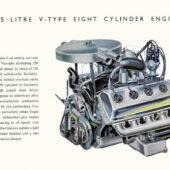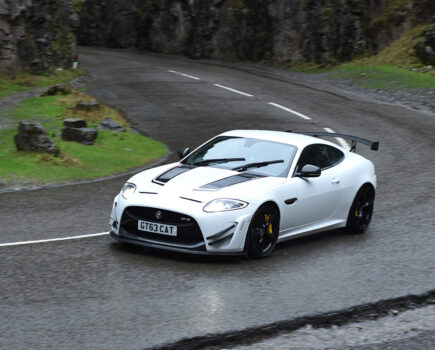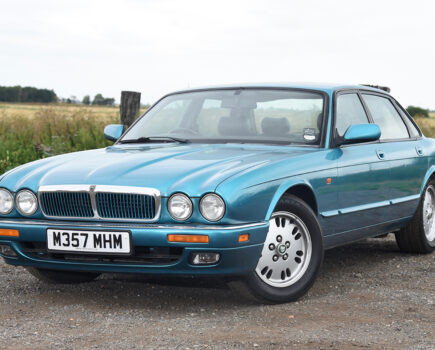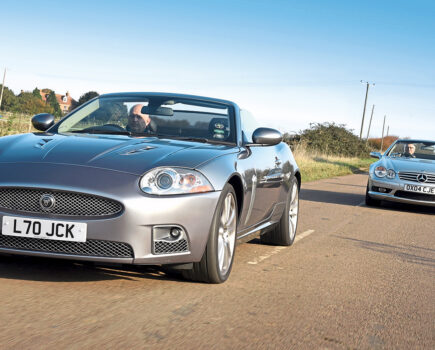We explore the life and times of the Turner V8 inherited by Jaguar as part of the firm’s takeover of Daimler
It’s generally accepted that the well-regarded AJ-V8 unveiled in the XK8 in 1996 marked the beginning of a new era for Jaguar. Not only was it a state-of-the-art powerplant, but it also offered the crucial V8 format needed to face up to German rivals BMW and Mercedes, especially in the USA where the V8 had long been a mainstay.
It wasn’t, however, Jaguar’s first V8 – or to put it more correctly, the first to be marketed as a Jaguar powerplant, that honour going to an engine design which was acquired as something of an orphan in the takeover of Daimler.
In typical William Lyons fashion, even senior executives at Jaguar were largely unaware of Lyons’ intention to acquire the struggling Daimler concern, even Chief Engineer Bill Heynes apparently hearing the announcement on the morning radio news.
Lyons agreed a fee of £3,110,000 for Daimler, but the prize wasn’t the firm’s low-volume car-making business, rather the 92,903sqm factory in the Radford area of Coventry. In fact, the vehicle making business made for rather dismal assessment: Jaguar engineers discovered that the V8-engined SP250 sports car suffered from such chassis flex that pushing down on the rear wing of the fibreglass body made the door shuts open up 8mm, while the car’s looks were challenging to say the least. To cap it all, it was discovered that the Daimler name hadn’t even been registered in the important US market and the newly introduced Majestic Major was selling so slowly that it was being made at the rate of ten cars a week.

Triumph’s Speed Twin engine was created as part of Turner’s inspiration
Even Daimler’s once proud bus division wasn’t doing well, having declined to the point where it was making losses, but there were two glimmers of hope: the Ferret armoured car manufactured under contract for the MoD was profitable and the Turner V8 powering the SP250 and the Majestic was a gem.
The engine is generally regarded as being the work of Daimler’s boss at the time of the sale, although it’s been suggested that much of the detail design was the work of his colleague Jack Wickes.
Edward Turner may have been at the tiller when Daimler was run into the ground, but much of the financial mishap can be laid at the feet of the extravagant tastes of former chairman Bernard Docker and wife Norah, who between them effectively bankrupted the company during his time in charge. In any case, Turner had an impeccable CV when it came to the world of motorcycle engineering, having designed the Ariel Square Four and later becoming chief designer and general manager of Triumph motorcycles, before becoming head of parent company BSA’s automotive division.
This included Daimler and one of his first tasks was to design a V8 engine for a proposed new saloon car. Unsurprisingly, Turner drew on his experience with motorcycle engines for much of the inspiration, including an overhead valve layout driven by pushrod, Usefully, this allowed him to follow motorcycle practice in the head design, notably the hemispherical combustion chambers which had been employed by his Triumph Speed Twin engine.

Amusingly, it’s also been suggested that Turner and Wickes also studied the workshop manual and parts lists for the Cadillac V8 – clearly a complete Caddy engine was beyond the Daimler budget.
The Daimler engine wasn’t the first car engine Turner had designed – he already had the Riley Nine to his credit – but clearly a V8 involved rather more complexity than a twin-cylinder bike motor. Nevertheless, the resulting Turner V8 was held in far higher regard than the car in which it debuted. In many respects the iron block, alloy head design was very conventional for the era, using two valves per cylinder and a single chain-driven camshaft, this mounted high up in the block to keep the pushrod length short.
The 90° vee layout allowed for compact dimensions, the short 760mm block length meaning the five-bearing crankshaft was commendably rigid, contributing to the smoothness for which the engine became known. Dynamo and water pump were driven by belt from the front of the unit, while the distributor was driven from the camshaft. Fuelling was by twin SUs and the polished alloy valve covers meant the underbonnet appearance compared well to Jaguar’s own XK.
Two different versions of the engine were developed: 2548cc and 4561cc, although precious little production economy was achieved through their shared design features since the block castings are in fact different.
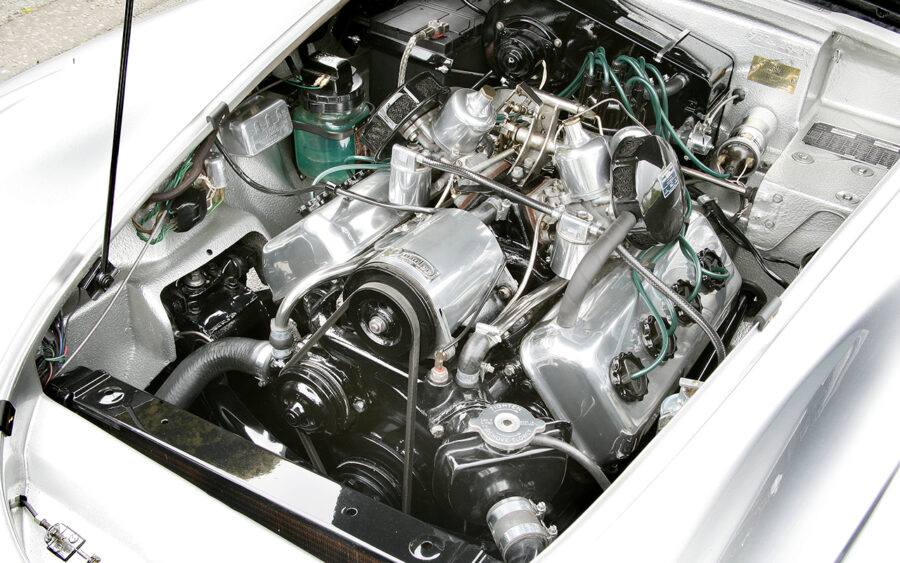
The V8 in its first application, the Daimler SP250
Although the brief which had originally resulted in the V8 had been for a saloon car, the V8 made its first public debut at the New York motor show in April 1959 in the SP250 sports car. At the time it still wore the proposed name Dart, which was later changed to SP250 after Chrysler pointed out that it had registered the name for its own Dodge Dart.
The Turner V8 didn’t get its time to shine until after Lyons had swooped down to buy Daimler, whereupon it was realised that the smooth-running V8 engine offered an ideal stepping stone between the breathless 2.4-litre XK engine and the 3.4-litre version.
It also offered a less sporting option for buyers not wanting the racy image of the Jaguar Mk2 and so in 1962 the Daimler V8 was born – or to give it the correct title, Daimler 2.5 V8.
With 140bhp, the Daimler was usefully faster than the entry-level 2.4-litre Mk2 and gained the crinkled chrome which would become a trademark of Daimler-badged Jaguars. It’s often assumed that the V8 was sold only in automatic form but a handful of manual cars were produced by the factory from 1967 and are highly prized today.
The 4.5-litre version of the Turner V8 was also used in the Daimler Majestic Major, which was a rare sight even in its heyday but which was a surprisingly rapid vehicle for its size, thanks to the 220bhp of the bigger engine.
The Major would be discontinued in 1968, but there’s a delightful urban rumour which suggests its engine was tried in the Jaguar MkX, where it rocketed round the MIRA track at 133mph. It’s reckoned that a V8-engined MkX didn’t make it to production purely because it was actually faster than the 3.8-litre Jaguar-powered car, but the truth is probably more prosaic: cash-strapped Daimler had only invested in tooling to produce the engine in very low quantities. And in any case, Jaguar already had the 4.2-litre XK on the way which would in fact be faster-accelerating than the V8 prototype.
in a cruel twist, the Majestic was replaced by the Daimler DS420 limousine, which was based on the Jaguar MkX and used the 4.2-litre XK.

The V8 sold steadily and would even make the transition from Mk2 to Jaguar 240/340, being renamed as the Daimler V8-250 in 1967. When production ended in 1969 some 17,620 had been produced.
It would also herald an era of range-topping Jaguars carrying the Daimler name which would continue until the end of X350 production in 2010. Daimler versions of the XJ weren’t available in the US market however, the range-topping cars wearing Vanden Plas badging instead. The reason was simple: that failure to register the Daimler name back in the ’50s had come back to haunt Jaguar.
Following the de-merger of DaimlerChrysler, Jaguar attempted to trademark the Daimler name for use in the US market, but was refused in 2009 by the United States Patent and Trademark Office on the grounds that it was primarily a surname.
This effectively meant the end for the Daimler-badged Jaguars, with the final Daimler – a Super V8 – now resident in Jaguar’s own Heritage collection.

